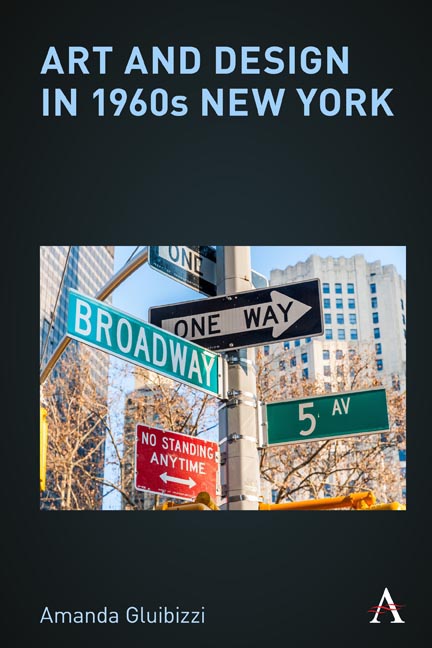Book contents
- Frontmatter
- Contents
- List of Figures
- Acknowledgments
- Introduction: The Entire Visual World
- 1 Designs on 1960s New York: The Image of Pop and North by Northwest
- 2 Breaking the Rules with the Beetle: Volkswagen’s Revolutionary Advertising and the Visual Wit of Andy Warhol’s Pop Art
- 3 Navigating by the Vernacular Glance: Billboards, Signs, and the Urban Combine
- 4 Way-Words: Wayfinding by Following Pieces
- 5 What’s the Matter with the Megalopolis?
- Notes
- Bibliography
- Index
5 - What’s the Matter with the Megalopolis?
Published online by Cambridge University Press: 02 March 2021
- Frontmatter
- Contents
- List of Figures
- Acknowledgments
- Introduction: The Entire Visual World
- 1 Designs on 1960s New York: The Image of Pop and North by Northwest
- 2 Breaking the Rules with the Beetle: Volkswagen’s Revolutionary Advertising and the Visual Wit of Andy Warhol’s Pop Art
- 3 Navigating by the Vernacular Glance: Billboards, Signs, and the Urban Combine
- 4 Way-Words: Wayfinding by Following Pieces
- 5 What’s the Matter with the Megalopolis?
- Notes
- Bibliography
- Index
Summary
By the late 1960s and into the early 1970s, traffic jams, aging buses and subways, heavy pollution, and confusing street signage made transportation through New York City nightmarish. Though writing in a rhetorical style that included a note of hyperbole, the graphic designer William McCaffery claimed in an essay included in Print that an ant could make it downtown faster than any human traveler could, so congested was the built environment facing New York's citizens. The crawl of traffic described in the article, though, was not viewed as merely a problem with cars, city streets, or density, but rather was laid out as a complex agglomeration of factors, one for which a simple fix, such as a freeway cutting through Manhattan neighborhoods, would not be an acceptable cure. To engage with such complexity would require collaboration from several areas of expertise. As we have seen in previous chapters, designers began to examine the problems facing New York City's built environment in earnest in the mid-1960s, teaming with urban planners, the mayor's office, and architects to devise solutions via visual communication. However, designers also began to understand that their own expertise would be called upon to complete these tasks. As McCaffrey wrote,
Those of us who live and work in this growing confusion of a city can't sit back and expect a mayor or a governor or more policemen to solve our problems; particularly if we are art directors and designers and writers and photographers and filmmakers— i.e., communicators. We’re the ones who must face up to the responsibility of relating our work to the lives we live and the life we observe around us. We must apply our skills and tools to the job of giving form and order and meaning to urban processes. By making the city even a bit more understandable, we make it a bit more livable.
Coming from the world of advertising, in which overhauls of corporate identities, branding, and advertising were adopted wholesale so as to optimize their effectiveness at developing a commercial image, graphic designers must undoubtedly have anticipated similar implementation of their civic designs, as well.
- Type
- Chapter
- Information
- Art and Design in 1960s New York , pp. 141 - 184Publisher: Anthem PressPrint publication year: 2021



